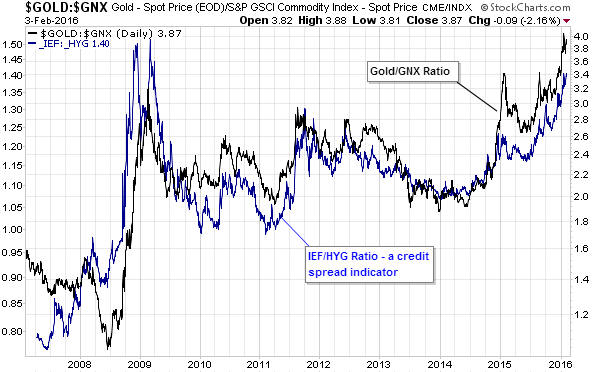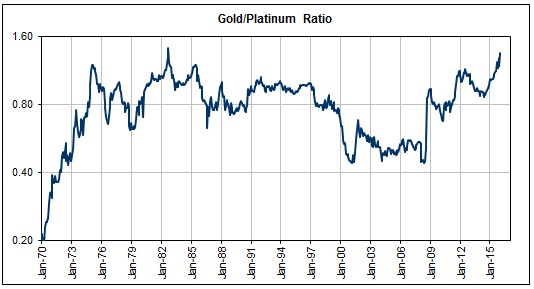In the blog post “Some gold bulls need a dose of realism“, I noted that relative to the Goldman Sachs Spot Commodity Index (GNX) the gold price was at an all-time high and about 30% above its 2011 peak. I then wrote: “Rather than imagining a grand price suppression scheme involving unlimited quantities of “paper gold” to explain why gold isn’t more expensive, how about trying to explain why gold is now more expensive relative to other commodities than it has ever been.”
A rational explanation of gold’s relative expensiveness begins with the premise that major trends in the gold/commodity ratio are invariably associated — in an inverse manner — with major trends in economic confidence. Since credit spreads are one of the best indicators of economic confidence, with generally-widening credit spreads signifying declining confidence and generally-narrowing credit spreads signifying rising confidence, it would be logical if there were a positive correlation between the gold/commodity ratio and credit spreads. As evidenced by the following chart, that’s exactly what there is.
The current widening trend for credit spreads dates back to mid-2014, which is when the oil price began to trend downward and obvious cracks began to appear in the global growth theme. More recently, cracks began to appear in the US growth theme and the pace of credit-spread widening accelerated, leading to an accelerated rise in the gold/commodity ratio.
Could gold become even more expensive relative to commodities in general? The answer is yes, but only if economic confidence continues to decline.
I doubt that the decline in economic confidence has run its course, so I expect the gold/commodity ratio to move further into new-high territory before something more important than a short-term top is put in place. However, there’s a good chance that the gold/commodity ratio will make a multi-year peak this year, due mainly to increasing strength (catch-up moves) in other commodities.
 Print This Post
Print This Post




